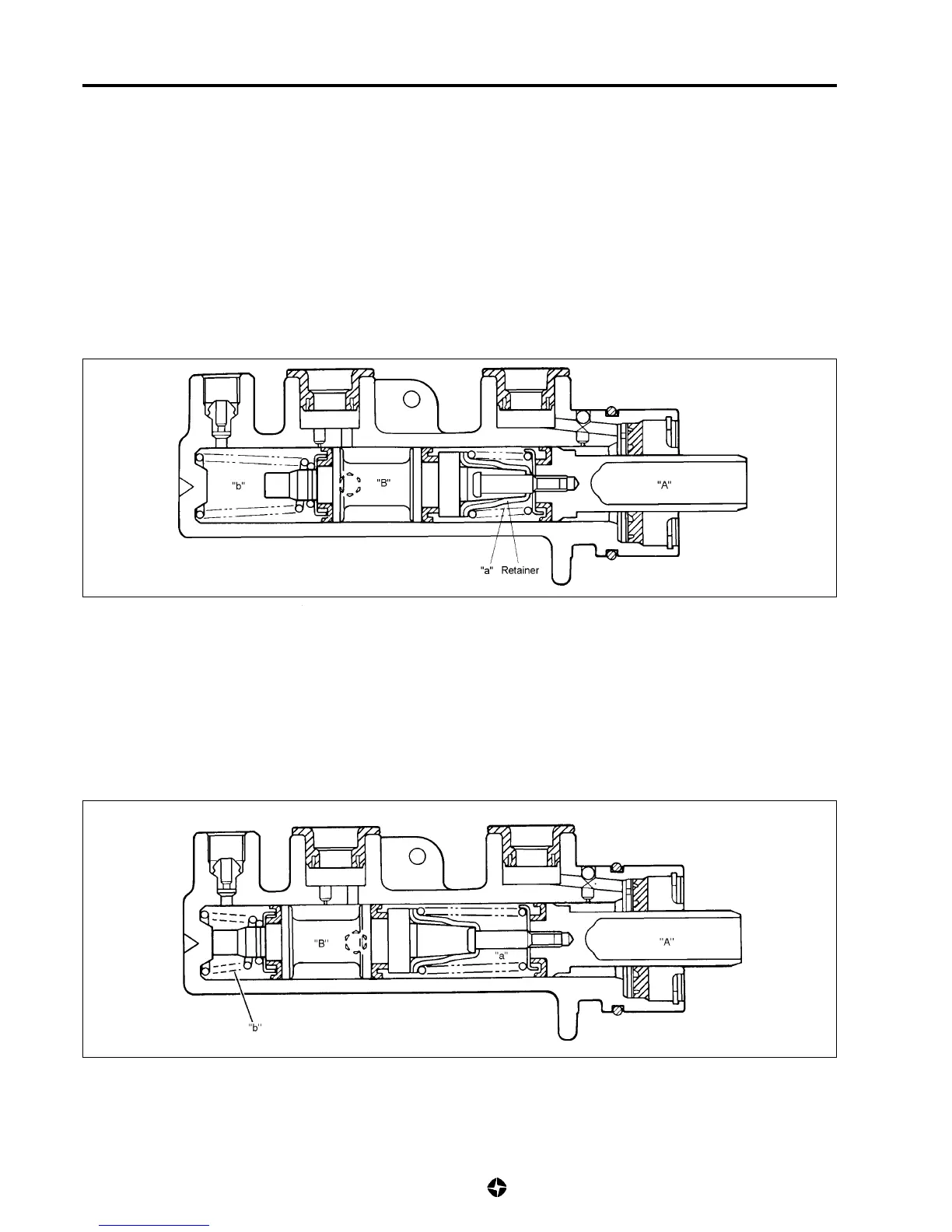BRAKES 5-5
MASTER CYLINDER ASSEMBLY
There are two pistons and three oil-seals (leathers) in each master cylinder. Hydraulic pressure is produced in primary
chamber ("a") in the drawing below) and secondary ("b"). The hydraulic pressure generated in primary chamber ("a") acts
on the rear wheels brakes (left and right). On the other hand, the hydraulic pressure generated in secondary chamber ("b")
acts on the front wheels brakes (left and right).
NOTE:
Replace all components included in repair kits to service this master cylinder. Lubricate rubber parts with
clean, fresh brake fluid to ease assembly. Do not use lubricated shop air on brake parts as demage to rebber
components may result. If any hidralulic component is removed or brake line disconnected, bleed the brake
system. The torque values specified are for dry, unlubricated fasteners.
Brake master cylinder running
When the brake pedal is pressed, the primary piston "A" is forced to move towards the left (see the figure below), which
generates a hydraulic pressure in chamber "a".
Through this pressure and through the springing returning force the secondary piston "B" is also pushed towards the left,
arising thus a hydraulic pressure in chamber "b".

